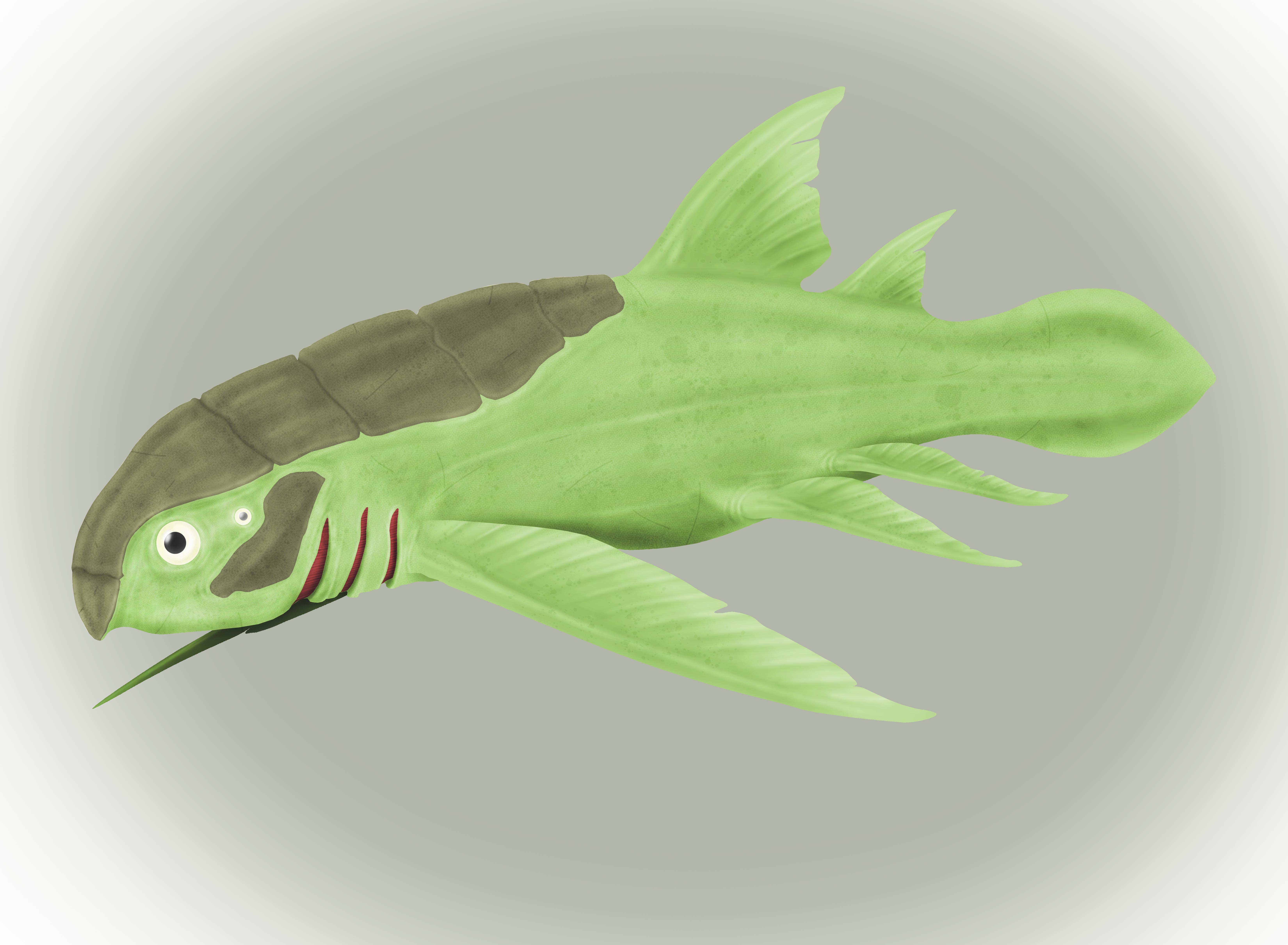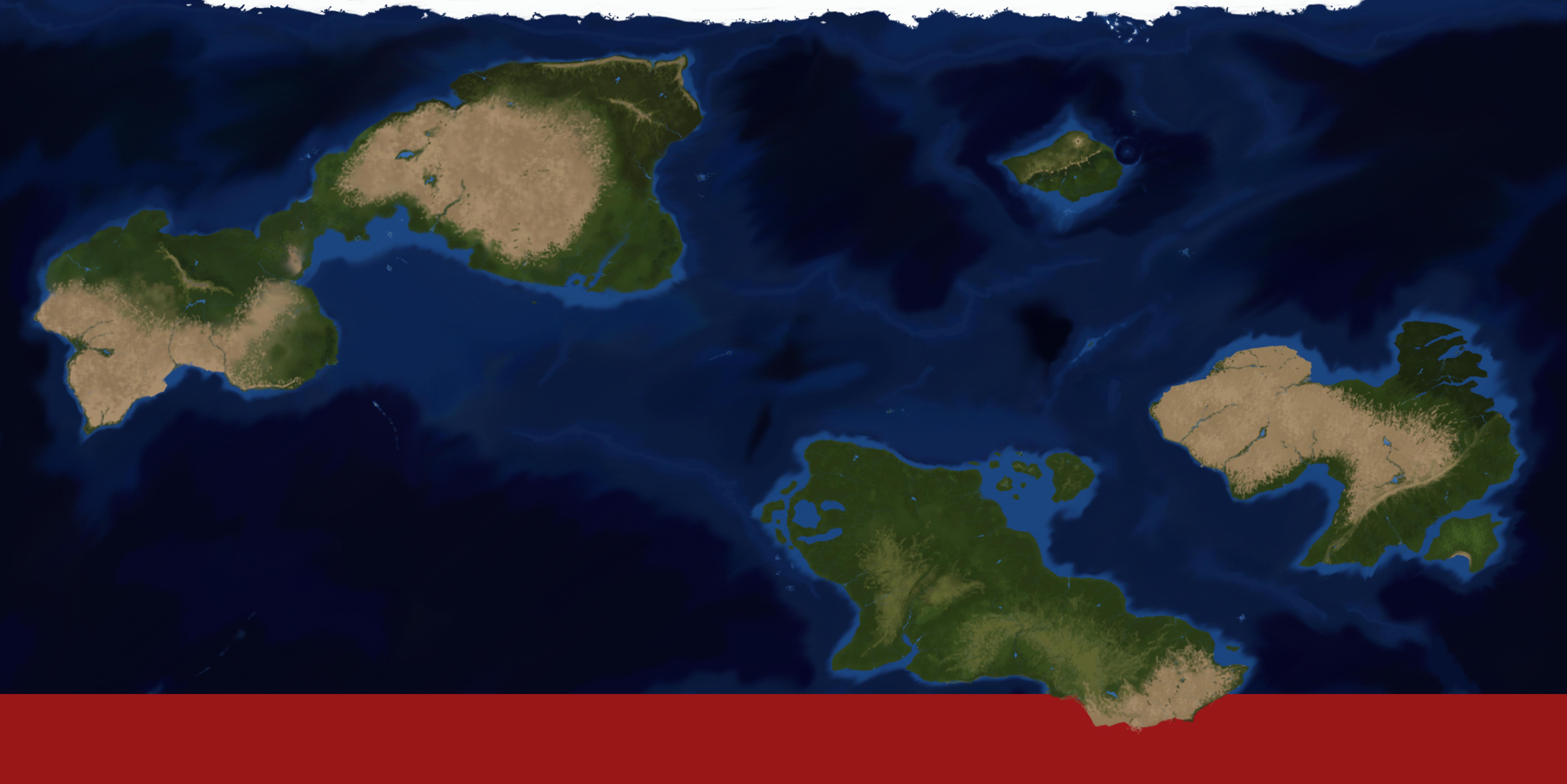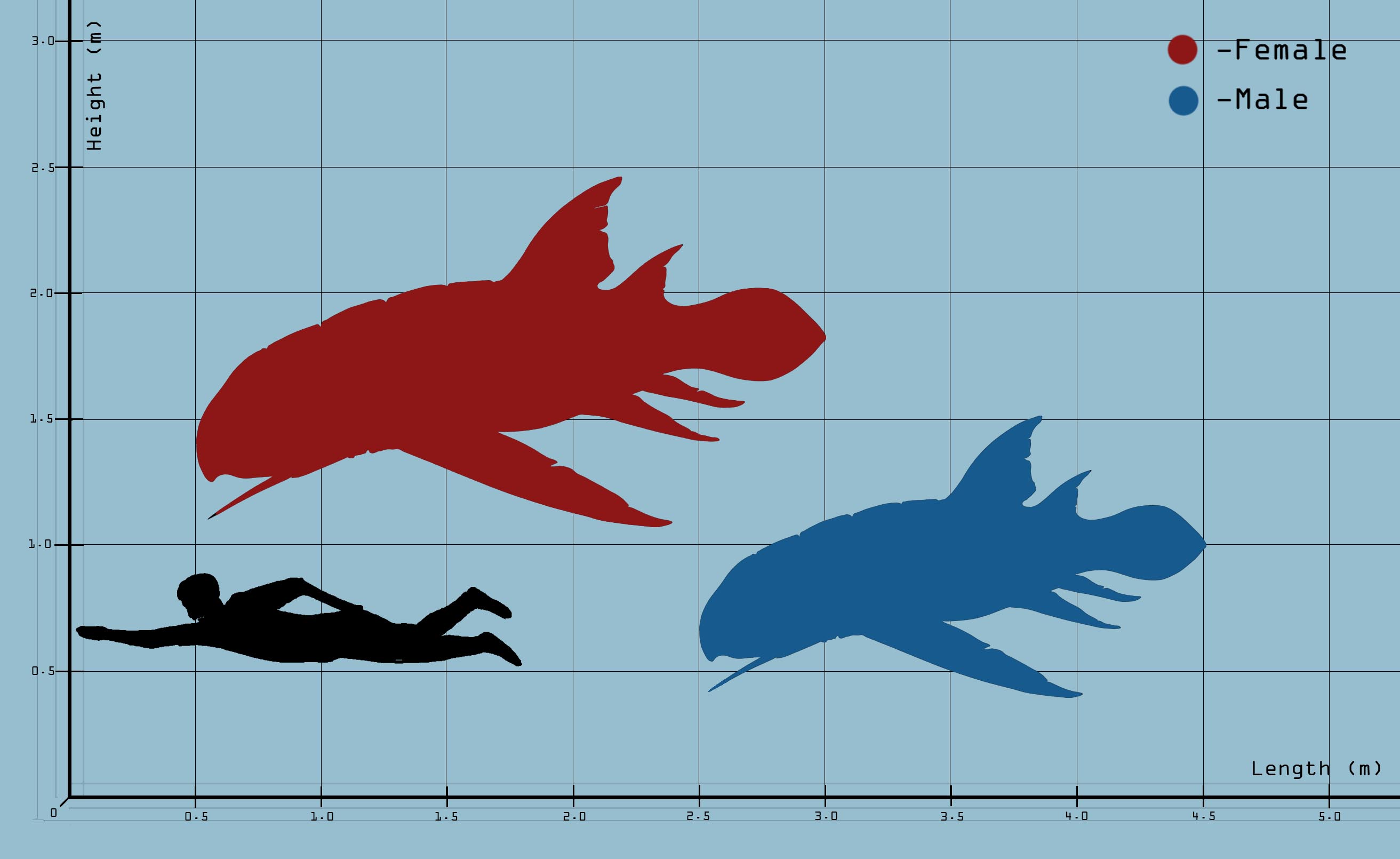Sandy Etrokapca
Romanocassis articulata is a species of Tracheocolumid Euithmòsid amphibian from the southern Nuwadi Ocean.
The species is found scattered in the southern Nuwadi Ocean, in fragmented populations in the photic zone near islands and sandy dunes, where it will sift the soft sand for benthonic organisms lying in it.
The species has been declining in numbers since before human colonization, with yearly numbers steadily decreasing as most populations disappear due to a series of causes ranging from superior competitors to pollution of the coastlines killing most of its preys.
R. articulata still survives in abundant enough numbers in the waters of the Leviathan Islands, where they are found in between the various landmasses composing the mountainous archipelago.
The amphibian uses the large recurved cranial armour to headbutt rocks and boulders, detaching small encrusting benthonic organisms from them and making them easily pickable by its filters.
The animal still preserves the second pair of eyes, an ancestral feature of the class, even though the latter is vestigial at this point, not being functional anymore.
The animal's body shape and asymmetrical filter disposition make it much less efficient in feeding than other Ithmòsids, being limited to feed only on the ventral surface of the neck; the developed armour is also much more energy inefficient to maintain, weighting the animal down and acting as further energy upkeep for it.
The common name takes from early sightings of mostly female populations during the early 2400s; the animal's most striking difference between males and females coming from body colouration.
Females have a sand-coloured body, better made to camouflage in the demersal habitat they live in while males are usually brighter and lime coloured, changing to the sandy colouration at will when in need of hiding their presence.
The animal, once consumed by several insular populations, was described as unsavoury and generally bad-tasting; today hunting the species, even for sport, is illegal.
The species entered the TWPP's red list of endangered species in 2462 and is included today in thirty-seven different protection and breeding programmes in the hope of somehow saving the mostly functionally extinct animal.
Basic Information
Anatomy
- Head rounded, cranial armour up to the frontal section of the premaxillary bone.
- Two pair of eyes, second one much smaller than the first and vestigial.
- Postcranial composed by four very large dorsal plates.
- Three filters on the ventral surface of the throat.
- Dorsal I & II fins veiled.
- Pectoral fins large and horizontally positioned, slightly angled ventrally.
- Anal I & II fins much smaller, growing very close one to the other.
- Gill tail short ending in a moderately large Gill Fan.
Genetics and Reproduction
Mandatorily monogamous species.
Romanocassis articulata mates in early summer, when the waters are most abundant in microbial nutrients.
The species mates in predetermined couples, usually formed the first mating season the young partake in, sometimes even before that.
To find a mate, young males will put up intricate and bright armour displays to attract females which will remain sandy coloured.
Interested females will change their colouration to a brighter one, inspecting the male and stroking its side with their body.
An already established couple will only limit themselves to a few mating dances in which the male and female will take turns swimming in circles around their partner, sometimes inverting the circling motion between them from clockwise to counterclockwise and back.
The eggs will be incubated in the duct for the whole duration of their growth, only being expelled the moment they're hatching.
Hatchlings will be nursed by both parents until they're big enough to mate, they'll leave the parents once they form a couple.
Growth Rate & Stages
Ontogenesis in the species not very marked.
Frontal cranial armour thinner at birth, never stops growing in thickness during the animal's lifespan.
Absorption of the natal aculeus two weeks after birth.
Ecology and Habitats
Demersal species living in the photic zone between 30 and 150 m deep.
It lives in close proximity to the seafloor.
Dietary Needs and Habits
Filter feeding species that sifts the seafloor for microbenthos.
It headbutts rocks and boulders to move about other encrusting micro-organisms to pick up with the three filters.
Biological Cycle
Seasonal animal active all year long, it will reduce activity during the colder months.
Additional Information
Social Structure
Social animal living in small familiar groups composed by the parents and their offspring.
The young will live alongside the parents until they find a mate, no matter the age.
They'll often interact with conspecifics by stroking their bodies together and lightly tapping the cranial armour one against the other.
Domestication
While impossible to keep in private or public aquariums due to their diet, size and specific environmental requirements, the species is still kept in several institutions to breed in captivity in large open water tanks, directly carved out from stretches of sea.
Uses, Products & Exploitation
No use for the species, especially after the world ban on its fishing.
Several conservation projects are underway to try and save it and, although many of them yielded results in breeding the animal in captivity, the amount bred compared to how quickly the animal is disappearing in highly anthropized areas leaves little hope to save the species.
Most populations have been already classified as functionally extinct either for being too small to sustain themselves or due to anthropization changing their environment to the point in which the niche they fill disappears.
Geographic Origin and Distribution
Perception and Sensory Capabilities
Average eyesight, good hearing.
Symbiotic and Parasitic organisms
Afflicted by diseases of the skin and armour.
Sometimes carrier of filtering parasites.
Scientific Name
Ithmòsia; Euithmòsia; Cylindrocephaloidea; Tracheocolumidae; Romanocassis; R. articulata
Lifespan
24 Years
Conservation Status
Critically Endangered to Locally Extinct: Functionally extinct in most of its range, the species is in more than thirty different conservation programs globally, although its continued survival is dubious.
Population trend: DECLINE
Average Weight
80-225 kg
Body Tint, Colouring and Marking
Lime to mint coloured body in males, females sand coloured.
Armour brownish to ruddy.
Remove these ads. Join the Worldbuilders Guild












Comments